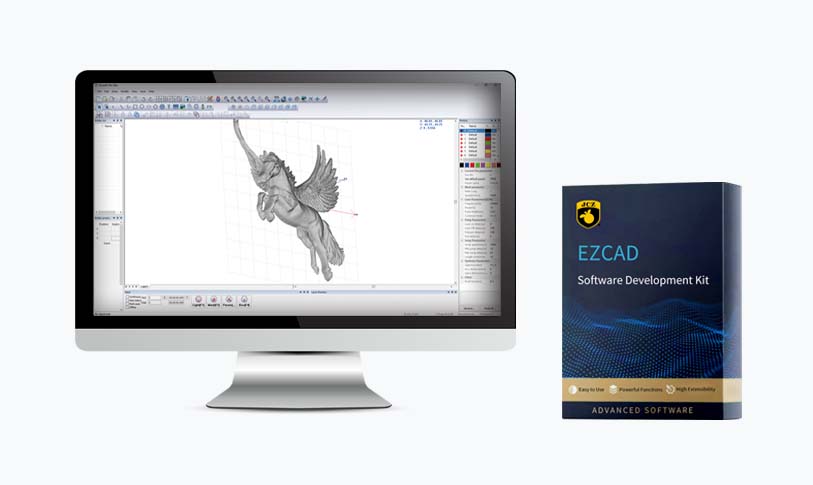The introduction of MOPA (Master Oscillator Power Amplifier) laser source technology has revolutionized various fields, including manufacturing, telecommunications, and medical applications. MOPA lasers are characterized by their unique structure, where a low-power master oscillator generates the laser beam, which is subsequently amplified by one or more power amplifiers. This technology offers several advantages over traditional laser systems, including enhanced beam quality, improved modulation capabilities, and greater flexibility in terms of output power and wavelength selections.
How MOPA Lasers Work
At its core, the MOPA laser configuration comprises two distinct components: the master oscillator and the power amplifier. The master oscillator is responsible for generating a coherent light beam with specific characteristics, such as frequency and phase. The power amplifier then takes this beam and increases its intensity without significantly altering its original properties. This structure allows for precise control over the output beam, making MOPA lasers suitable for a wide range of applications.
MOPA lasers can operate in continuous wave (CW) or pulsed modes, depending on the requirements of the application. In the pulsed mode, the laser can produce high peak powers due to the short duration of the pulses, which is particularly beneficial in industrial laser cutting and medical procedures. Conversely, the CW mode offers stable output, essential for applications that require a consistent energy delivery.
Advantages of MOPA Laser Sources
One of the primary advantages of MOPA laser sources is their ability to deliver excellent beam quality. The combination of a well-defined master oscillator and power amplification allows for a more uniform intensity distribution, leading to finer focus and improved precision when engaging with various materials. The high beam quality improves performance in applications such as laser marking, engraving, and high-precision cutting.

Exploring the Advantages and Applications of MOPA Laser Source Technology in Modern Industry and Medicine
Moreover, MOPA lasers offer superior modulation capabilities. The master oscillator can be modulated with high speed and accuracy, enabling dynamic adjustments to the laser output in real-time. This ability to modulate the output significantly enhances the laser’s versatility, allowing it to adapt to different processes, such as variable-speed laser welding or intricate engraving patterns.

Exploring the Advantages and Applications of MOPA Laser Source Technology in Modern Industry and Medicine
Another significant advantage of MOPA lasers is their scalability. The output power of MOPA systems can be easily adjusted by modifying the gain in the amplifier stage, allowing users to scale the laser performance according to the requirements of their specific application. This flexibility is particularly valuable in industries such as aerospace and automotive, where varying thicknesses of materials necessitate different laser power settings.
Applications in Industry

Exploring the Advantages and Applications of MOPA Laser Source Technology in Modern Industry and Medicine
MOPA lasers are increasingly being adopted in manufacturing processes such as laser cutting, welding, and surface treatment. In laser cutting, the high peak power and excellent beam quality mean that MOPA lasers can effortlessly cut through a variety of materials, including metals, plastics, and composites. Their ability to modulate output allows for intricate cuts, including sharp corners and tight radii, which are important in precision engineering tasks.
In the realm of welding, MOPA lasers provide exceptional control over the heat input and penetration depth, reducing the risk of thermal distortion. This quality ensures high-strength welds while maintaining the integrity and properties of the base material. MOPA systems are also suitable for delicate applications, such as joining thin materials or creating micro welds without damaging adjacent areas.
Medical Applications
The medical field has also seen significant advancements with the adoption of MOPA laser systems. In dermatology and cosmetic surgery, MOPA lasers are used for skin resurfacing, hair removal, and tattoo removal, thanks to their precise energy delivery. The ability to fine-tune the laser parameters safely allows medical professionals to customize treatments to individual patient needs, reducing recovery times and side effects.
Additionally, MOPA technology is becoming pivotal in surgical applications, where high precision and minimal invasiveness are paramount. Procedures such as laser-assisted ophthalmic surgery can benefit from the controlled energy output of MOPA lasers, ensuring accurate tissue cutting with minimal collateral damage.
Conclusion
The emergence of MOPA laser source technology has significantly transformed various sectors by offering enhanced performance, flexibility, and precision. Whether in industrial manufacturing or medical applications, MOPA lasers continue to revolutionize processes and improve outcomes. As this technology evolves, we can expect to see even broader applications and innovations that leverage the unique advantages of MOPA laser systems in the years to come.desktop co2 laser




